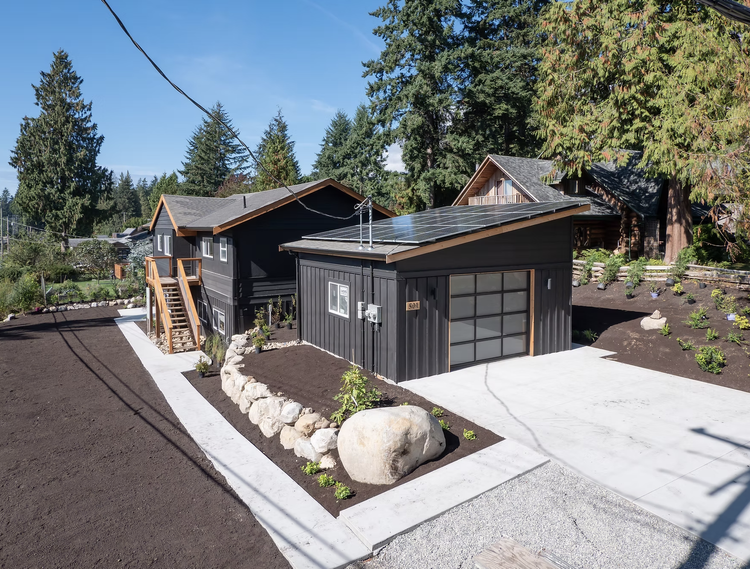Debunking Myths: Are Salvaged Homes Old, Unsafe, or Outdated?
When people hear about salvaged homes, they often envision dilapidated structures, peeling paint, or outdated layouts. While these misconceptions are common, they couldn’t be further from the truth. Salvaging homes offers an innovative, sustainable, and high-quality approach to housing, but these myths can prevent homeowners, developers, and communities from fully appreciating the value of this solution.
At Renewal Development, we’re here to set the record straight. Let’s debunk the myths surrounding salvaged homes and show why they’re not only viable but often superior housing options.
Myth 1: Salvaged Homes Are Old and Outdated
The idea that salvaged homes are outdated is one of the most persistent myths. While many salvaged homes were built decades ago, this doesn’t mean they’re behind the times. In fact, older homes often feature timeless architectural details, high-quality materials, and craftsmanship that’s hard to replicate in modern construction.
When a home is salvaged and relocated, it undergoes thorough modernization to meet today’s standards. Updates include:
Energy-Efficient Upgrades: Insulation, windows, and HVAC systems are replaced to improve energy efficiency and reduce long-term operating costs.
Modern Finishes: Kitchens, bathrooms, and living spaces are refreshed with contemporary designs and materials, blending classic charm with modern functionality.
Structural Improvements: Foundations, roofing, and framing are reinforced or replaced as needed, ensuring the home is built to last.
The result? A home that combines the character and durability of older construction with the comfort and convenience of modern living.
Myth 2: Salvaged Homes Are Unsafe
Safety is another common concern, but it’s one that’s easily addressed. Every salvaged home goes through a rigorous inspection process to identify and resolve any structural, electrical, or plumbing issues. At Renewal Development, safety is a top priority, and our process includes:
Thorough Assessments: Homes are carefully evaluated before relocation to ensure they’re suitable for salvage.
Code Compliance: During modernization, all updates adhere to or exceed current building codes.
Specialized Expertise: Our team of skilled professionals handles every aspect of the relocation and renovation process, ensuring that homes are safe and secure for their new owners.
Salvaged homes are often as safe—or safer—than new builds, thanks to their meticulous renovation and inspection process.
Myth 3: Salvaged Homes Are Poor Quality
Many assume that homes slated for demolition are poorly built or no longer valuable. However, in many cases, these homes are being removed not because of their quality but because of zoning changes, urban redevelopment, or densification projects.
In fact, older homes often feature superior materials, such as:
Old-Growth Wood: Denser, stronger, and more durable than many modern alternatives, old-growth wood is a hallmark of older construction.
High-Quality Fixtures: Original fixtures like doors, cabinetry, and hardware are often crafted with care and precision, adding character and value.
Solid Foundations: Many older homes are built with materials and techniques designed to withstand the test of time.
By salvaging and updating these homes, we preserve their inherent quality while addressing modern needs.
Myth 4: Salvaging a Home is Too Complicated
While it’s true that relocating a home requires careful planning, the process isn’t as daunting as it might seem—especially when working with an experienced team. At Renewal Development, we manage every step of the process, including:
Assessment and Planning: Evaluating the home, site, and logistics to ensure a smooth relocation.
Modernization: Upgrading the home to meet current standards.
Delivery and Setup: Transporting the home to its new location and ensuring it’s fully functional.
Our turnkey approach means that homeowners and developers can focus on the big picture while we handle the details.
Myth 5: Salvaged Homes Don’t Fit Modern Lifestyles
Some people worry that salvaged homes aren’t adaptable to modern needs, but this couldn’t be further from the truth. Salvaged homes can be customized to suit a variety of lifestyles, including:
Single-Family Living: Spacious layouts and modernized interiors make salvaged homes ideal for families.
Laneway Homes or ADUs: Compact, efficient designs allow salvaged homes to serve as secondary units or rental properties.
Remote or Off-Grid Living: Salvaged homes can be relocated to rural or remote areas, providing an affordable and sustainable housing solution.
With thoughtful updates and customization, salvaged homes can meet the demands of today’s homeowners while retaining their unique charm.
Why Choose Salvaged Homes?
Debunking these myths reveals the true potential of salvaged homes. They’re not just an alternative to traditional construction—they’re a sustainable, high-quality option that benefits homeowners, communities, and the environment. Here’s why salvaged homes are worth considering:
Environmental Impact: Salvaging homes reduces landfill waste, conserves resources, and lowers the carbon footprint of housing development.
Affordability: Relocating and modernizing a salvaged home is often more cost-effective than building new.
Character and Quality: Salvaged homes offer a unique blend of classic craftsmanship and modern upgrades.
A Future Built on Sustainability
At Renewal Development, we’re passionate about showcasing the value of salvaged homes. By challenging outdated perceptions and embracing innovative solutions, we’re helping to create a future where quality housing is both accessible and sustainable.
If you’re interested in learning more about salvaged homes or exploring how they can meet your housing needs, we’d love to connect. Together, we can redefine what’s possible in the world of housing.

